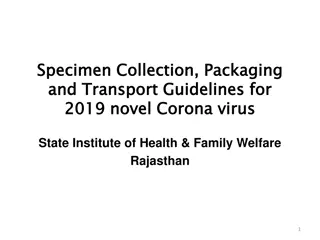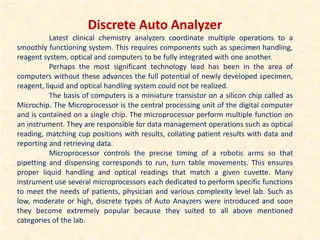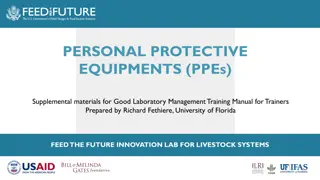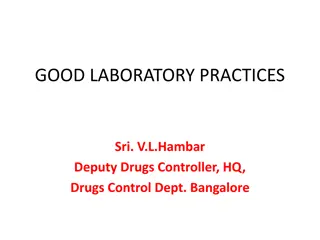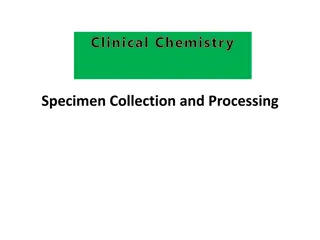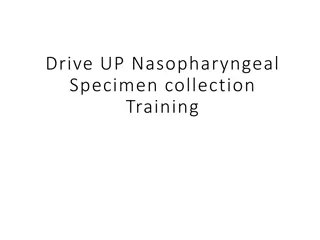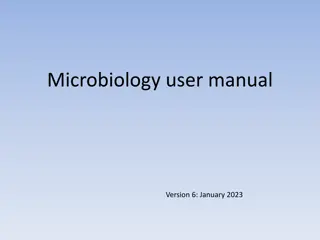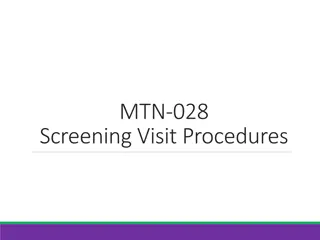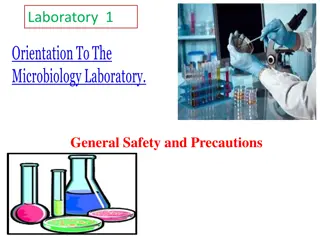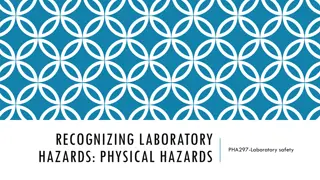Best Practices for Clinical Laboratory Specimen Handling
Good clinical laboratory practice emphasizes the proper collection, storage, and transportation of laboratory specimens to ensure accurate and reliable test results. Key aspects include obtaining high-quality specimens, maintaining specimen integrity, and following standard precautions to prevent contamination. Proper specimen identification, labeling, and storage are crucial to maintaining the quality of results. Different specimen types require specific handling procedures for optimal preservation. Adhering to these practices is essential for the efficiency and accuracy of medical testing.
Download Presentation

Please find below an Image/Link to download the presentation.
The content on the website is provided AS IS for your information and personal use only. It may not be sold, licensed, or shared on other websites without obtaining consent from the author. Download presentation by click this link. If you encounter any issues during the download, it is possible that the publisher has removed the file from their server.
E N D
Presentation Transcript
Collection, storage and transportation of laboratory specimens Good clinical laboratory practice is an international ethical and scientific standard for designing, conducting, recording and reporting medical tests, the main objectives of good laboratory practice are: a) to obtain excellent biological specimens for pathology testing while Ensuring the comfort and safety of the patient and the technician. b) To preserve the integrity of the specimen to ensure optimum results by:
Collecting the specimen into the correct container (size, medium, expiry etc.). Storing the specimen at the correct temperature. c) To ensure that the specimen is transported to the laboratory in a safe and timely manner.
Standard Precautions to prevent contamination of specimen and technician Always wash hands before and after the collection of specimens. Wear gloves when necessary. Disposal of needles, syringes and sharps must be into sharps containers. Sample Collection Always identify the patient. Select the right equipment required to collect the specimens (blood tubes, swabs etc.). Once the sample is collected, dispose of any sharps objects immediately.
Specimen collection: will be illustrated later Specimen identification and labeling: EVERY individual tube, container, specimen sent to the lab must have a label applied to it (not loose in the bag.) All specimens or blood samples without a label will be rejected. All labels & requisitions must be examined to determine if all information necessary is present & correct. Identification of the patient and labeling of specimens must occur at the point of collection (at the bedside). For any specimen, there are necessary items that need to be present on the label and they must all be correct or the specimen will be rejected. Adults items include :last name, first name, date of birth, collection date, collection time collector s initials Storage To ensure the quality of results, specimens should be transported to the laboratory as soon as possible. However, if there is a delay, to minimise deterioration we recommend these guidelines be followed.
Microbiology Specimens Specimens that should be stored at refrigerator temperature until transport to the laboratory are swabs, Urine , Faeces ,Body fluids / aspirates ,Sputa , FNA and Tissue samples some specimens should be stored at room temperature such as Blood Cultures and Mycology skin scraping Seminal Fluids for infertility Keep at body temperature (to lab within 1 hr.). Chemistry / Haematology / Immunology It is preferable and ideal to have all blood specimens sent to the lab as soon as possible. Histology Specimens fixed in Formalin at Room temperature. Cytology Smears Fixed slides are transported to Lab in slide holders after fixing and air-drying.




